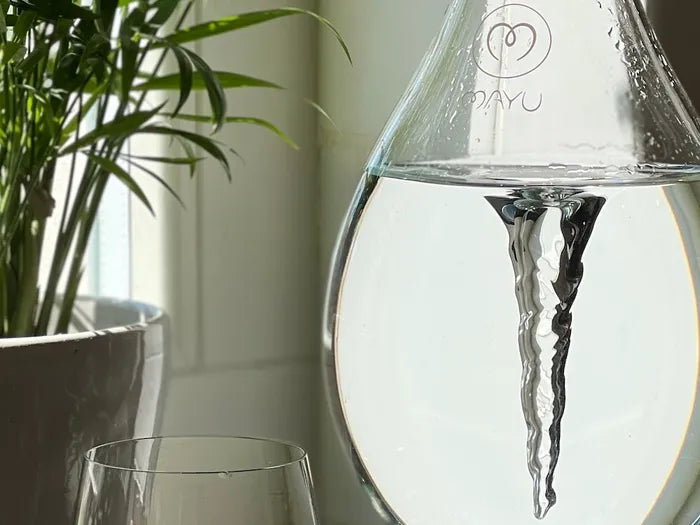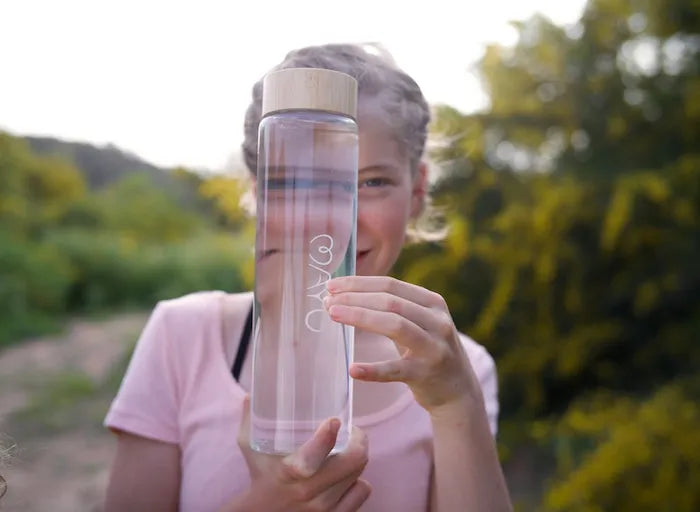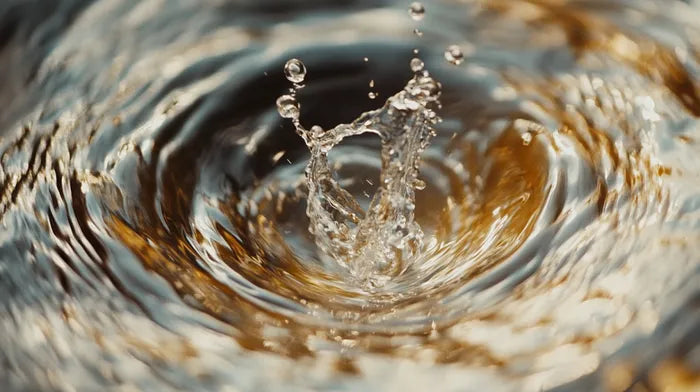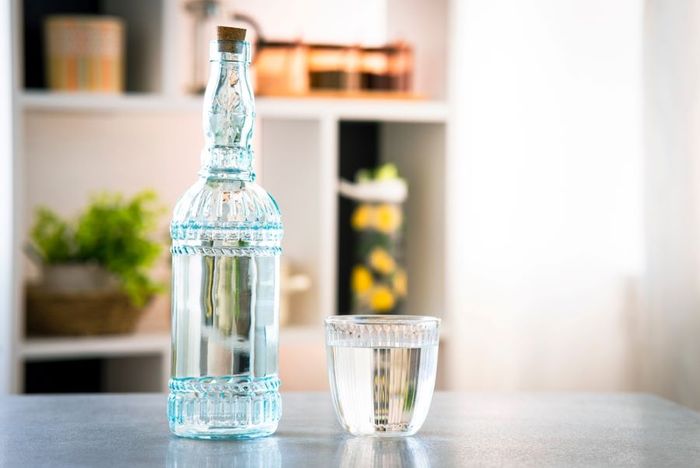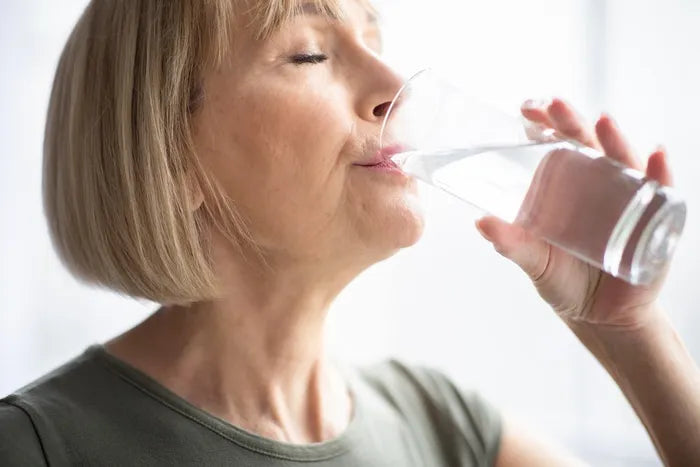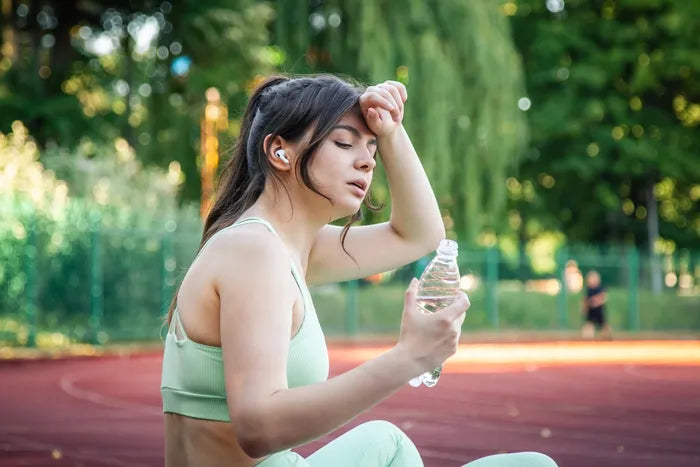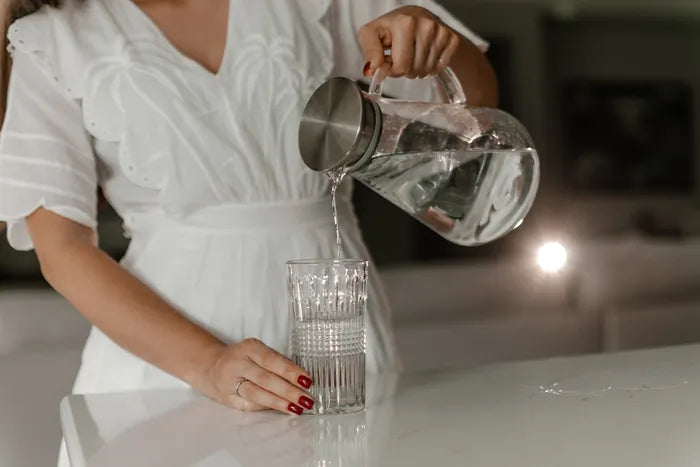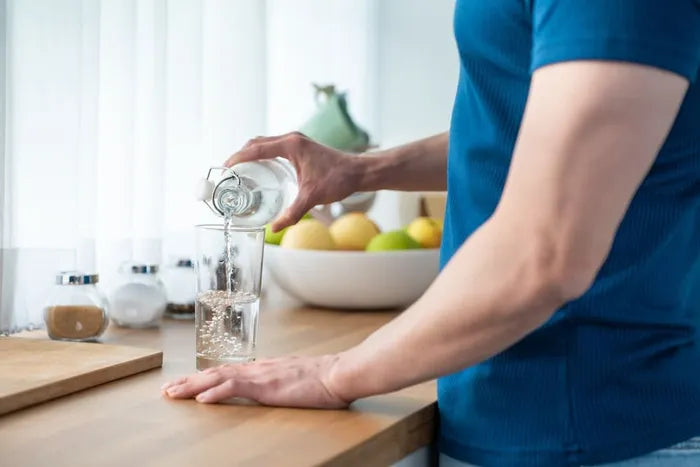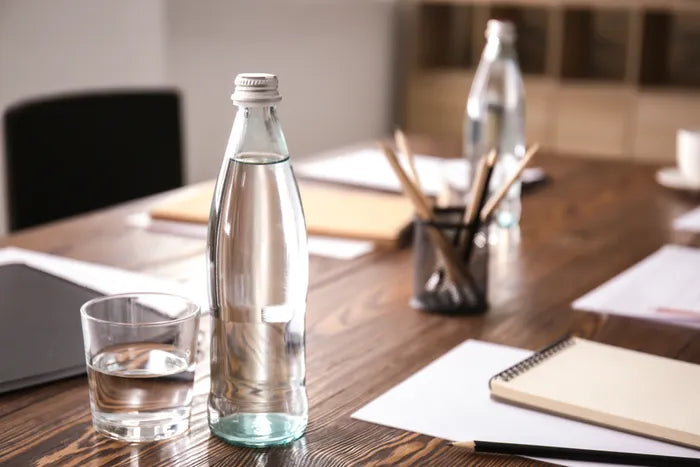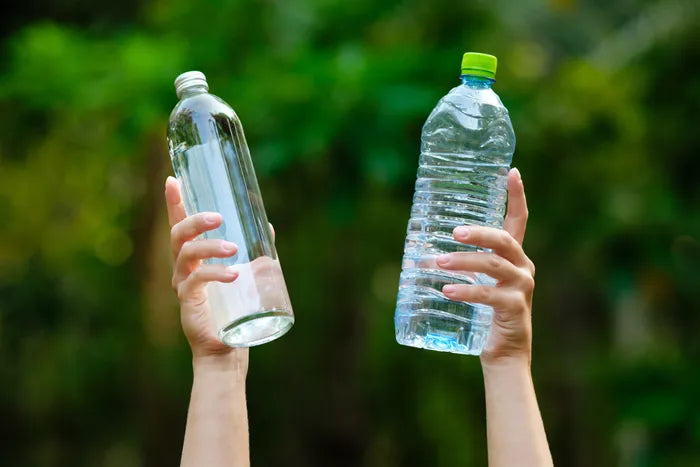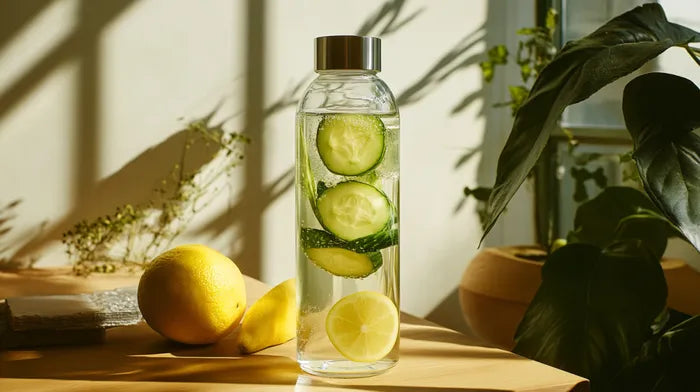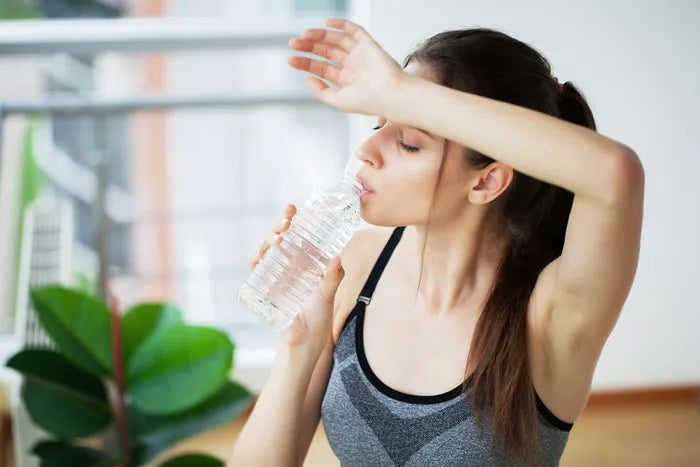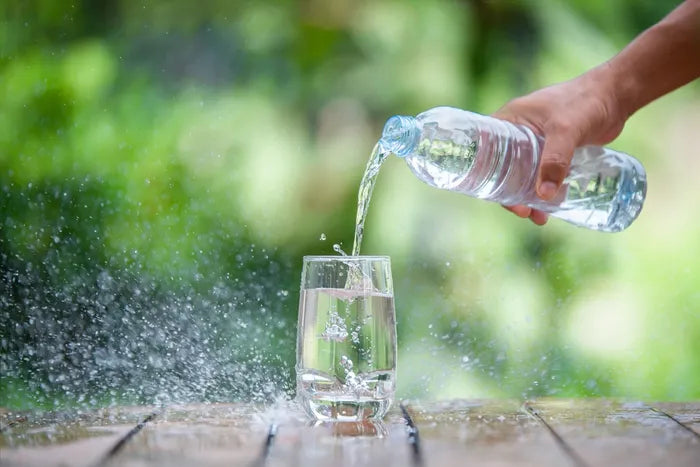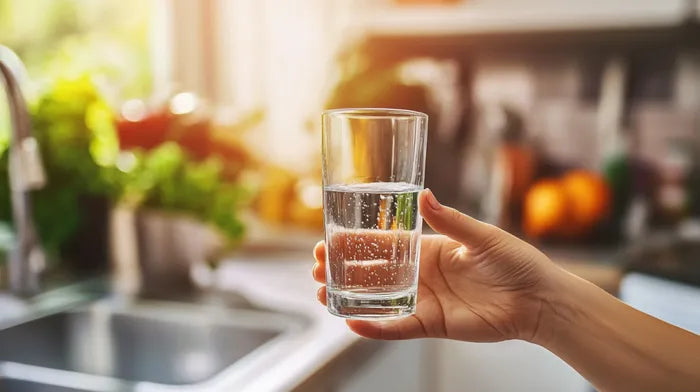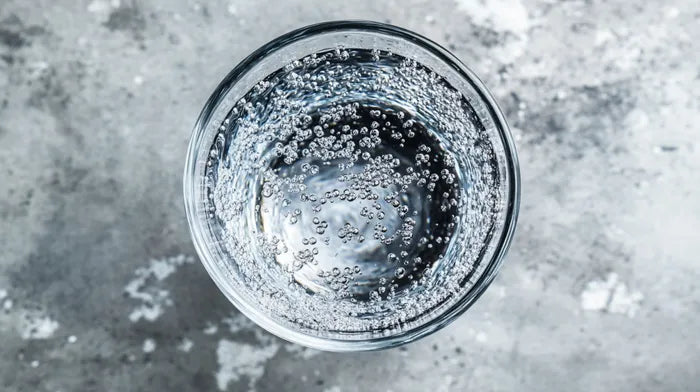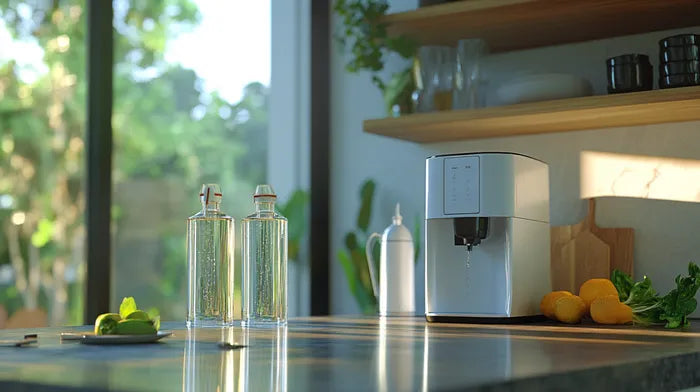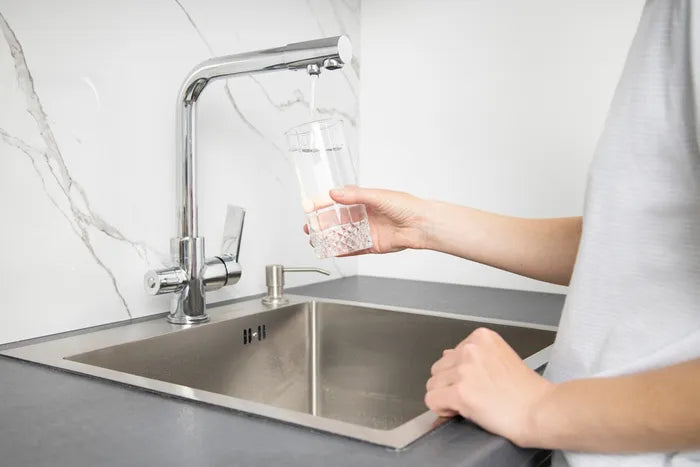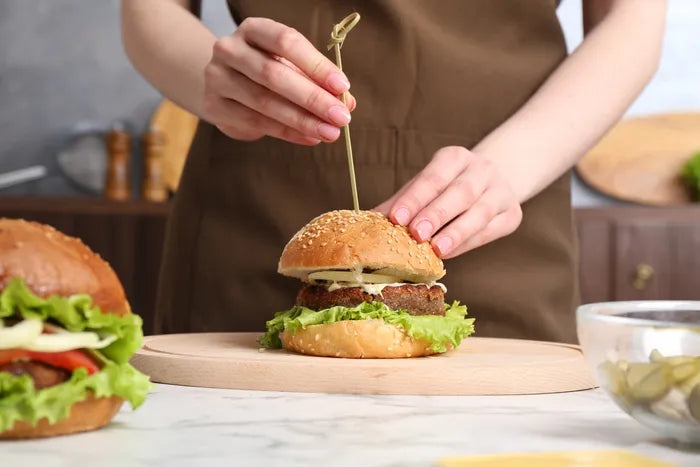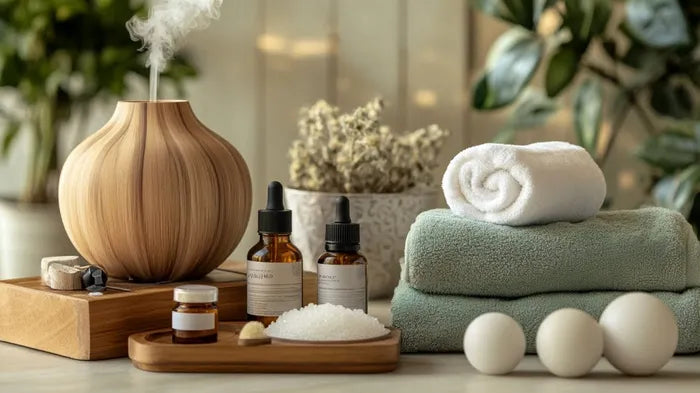5 Benefits of Using Reusable Water Bottles Over Plastic
Your wallet, the planet, and your hydration—all three win when you ditch the plastic and grab a reusable water bottle.
Published January 2, 2025

We are drowning in plastic. We guzzle down bottled water at a staggering rate, buying 1 million bottles each minute worldwide [1]. While convenient, this habit has created a monstrous environmental problem, with mountains of single-use plastic bottles clogging landfills and polluting our oceans.
But that's not the only impact. Microplastics, tiny particles shed from degrading bottles, are now found everywhere, from the deepest ocean trenches to the air we breathe. The convenience comes at a steep price, threatening not only the planet but also our health.
Below, we will explore the compelling environmental and health benefits of switching to reusable water bottles, offering a practical path toward a more sustainable and less plastic-polluted future.
» Enjoy clean drinking water on the go: Get a reusable water bottle
5 Advantages of Reusable Water Bottles Over Plastic
1. Reduction in Plastic Waste
Plastic bottles are a major source of pollution and cause serious environmental damage. Billions of them end up in landfills or the ocean every year, releasing harmful chemicals into the soil and water [2]. This contamination hurts wildlife, often through ingestion or entanglement.
Pollution also disrupts natural ecosystems. Most plastic bottles, especially those made from polyethylene terephthalate (PET), take up to 450 years to decompose. During this time, they continue to harm both land and marine environments [3].
Reusable water bottles greatly reduce the amount of plastic trash ending up in landfills or the ocean. Even large companies are starting to see the benefits. For example, Coca-Cola aims to sell at least 25% of its drinks worldwide in refillable or returnable containers by 2030 [4].
» Find out which reusable water bottles made our list this year
2. Cost savings
According to 92 countries analyzed in September 2022, the average cost of a plastic water bottle globally is $0.70/1.5-liter, which amounts to roughly $1400/year.
In contrast, a quality glass reusable bottle—like the one from MAYU Water—costs $39/year. Over time, this adds up to significant cost savings, making it a worthwhile investment.
Additionally, municipalities spend millions hauling plastic waste, so reducing individual reliance on single-use bottles can help cut down on these public expenses. The initiative can also save you money through lower waste management fees.
» Read our in-depth comparison of plastic and glass water bottles
3. Conservation of Resources
Manufacturers use up a lot of oil, water, and electricity to produce single-use plastic bottles. The process contributes to pollution and uses up valuable resources. Reusable alternatives help lessen the environmental harm caused by getting raw materials, making the bottles, and transporting them.
4. BPA Exposure
Single-use plastic bottles can release harmful chemicals into the water, especially when exposed to heat or damage. One of them is bisphenol A (BPA), which has been shown to affect your health in many ways:
- Researchers have found that BPA exposure is linked to insulin resistance and type 2 diabetes [5].
- Some studies show that BPA might even cause immune issues, which can lead to increased allergies, such as hay fever [6].
- BPA can also affect heart health by causing a thickening of the heart's left wall [7].
- Because BPA's structure is similar to estrogen, it can disrupt normal hormone function, leading to early puberty and changes in sexual behavior [8].
Reusable water bottles made from stainless steel or glass are free from BPA. By using them, you are reducing your exposure to this harmful substance, safeguarding your long-term health.
» Find out exactly how plastic bottles are damaging your health
5. Microplastics
Single-use bottles break down into tiny particles called microplastics, which pollute ecosystems worldwide. Research suggests that these substances can pass through the gut lining [9].
They may cause oxidative stress and inflammation in the body [10]. The longer you reuse a bottle, the greater the risk of consuming these plastic particles.
On the other hand, reusable bottles like the ones made from aluminum don't break down, and they are often lined with non-toxic coatings that prevent chemicals from leaching into your water.
» Tired of lukewarm water? Discover the best water bottles for your fridge
Popular Reusable Water Bottle Types and Their Unique Benefits
Glass Bottles
Glass bottles are a great choice because they offer a pure taste without any chemicals leaching into the water. They are easy to clean and don't hold onto odors or flavors.
Many glass bottles have silicone sleeves for better grip and protection from breaking. However, glass is breakable and heavier than other materials, making these bottles less convenient for carrying around.
MAYU Water offers bottles made from high-quality borosilicate glass. This type of glass provides a pure water taste because it doesn't react with the water. The bottles are also free from harmful chemicals like Bisphenol A (BPA), Bisphenol S (BPS), lead, and plastic.
Silicone Bottles
Silicone bottles are light, flexible, and can be collapsed, making them perfect for travel. They are also durable and can handle both hot and cold temperatures. But they might start to retain odors or flavors after a while. They also don't insulate drinks well and are harder to clean than glass or stainless steel bottles.
Stainless Steel Bottles
Stainless steel bottles are very durable and resist rust. Many are insulated, which is great for keeping drinks hot or cold. They don't transfer flavors to your drinks and are generally easy to clean. On the downside, they can be heavy, dent easily, and sometimes give the water a metallic taste.
» Find out if sodium in bottled water is bad for you
How to Maximize the Lifespan of Your Reusable Water Bottle
To keep your reusable water bottle in good condition and safe to use, follow these tips:
- Regular Cleaning: Use warm, soapy water for daily cleaning. For a deeper clean, use a mixture of vinegar and baking soda. Pay special attention to caps and spouts, as bacteria can easily build up there. Make sure all parts of the bottle are cleaned properly.
- Avoid Extreme Temperatures: Don't expose your bottle to extreme heat or cold unless it's designed for it. For example, MAYU Water bottles are made from 100% borosilicate glass—you can place them in your freezer!
- Replace Worn-Out Components: Check your bottle regularly for worn-out parts like caps, seals, or lids. Replace them as needed to prevent leaks and keep your bottle hygienic.
Refill and Repeat: Taking Action for a Sustainable Tomorrow
Switching to reusable water bottles isn't just good for the environment; it shows we care and are willing to change. It's a way of rejecting a culture that throws everything away.
Big changes from companies and governments are needed to solve the plastic problem, but what we do as individuals also matters. When we choose to refill a bottle, we're helping protect the planet and our health. We're also joining a movement that values sustainability over convenience.
A future without plastic may seem far off, but it starts with small, deliberate actions, like using a reusable bottle. It's time to stop using single-use plastics and find a healthier, more sustainable way to drink water. We have the power to make a difference, one bottle at a time.
» Head towards a plastic-free future: Get a reusable water bottle
References;
- “Visual Feature | Beat Plastic Pollution,” Mar. 01, 2022. Available: https://www.unep.org/interactives/beat-plastic-pollution/
- N. Zaini, N. Kasmuri, A. Mojiri, T. Kindaichi, and S. E. Nayono, “Plastic pollution and degradation pathways: A review on the treatment technologies,” Heliyon, vol. 10, no. 7, p. e28849, Mar. 2024, doi: 10.1016/j.heliyon.2024.e28849. Available: https://pubmed.ncbi.nlm.nih.gov/38601511/
- S. Dey, G. T. N. Veerendra, P. S. S. A. Babu, A. V. P. Manoj, and K. Nagarjuna, “Degradation of plastics waste and its effects on biological ecosystems: A scientific analysis and Comprehensive review,” Deleted Journal, vol. 2, no. 1, pp. 70–112, May 2023, doi: 10.1007/s44174-023-00085-w. Available: https://doi.org/10.1007/s44174-023-00085-w
- “Coca-Cola North America ramps up reusable packaging pilots,” Jul. 12, 2023. Available: https://www.coca-colacompany.com/media-center/coca-cola-north-america-ramps-up-reusable-packaging-pilots
- F. Farrugia, A. Aquilina, J. Vassallo, and N. P. Pace, “Bisphenol A and Type 2 Diabetes mellitus: A review of Epidemiologic, functional, and early life factors,” International Journal of Environmental Research and Public Health, vol. 18, no. 2, p. 716, Jan. 2021, doi: 10.3390/ijerph18020716. Available: https://pmc.ncbi.nlm.nih.gov/articles/PMC7830729/#:~:text=Higher%20bisphenol%20A%20(BPA)%20concentrations,subjects%20in%20the%20lower%20quartiles.
- E. M. R. Clayton, M. Todd, J. B. Dowd, and A. E. Aiello, “The impact of bisphenol A and triclosan on immune parameters in the U.S. population, NHANES 2003–2006,” Environmental Health Perspectives, vol. 119, no. 3, pp. 390–396, Nov. 2010, doi: 10.1289/ehp.1002883. Available: https://pmc.ncbi.nlm.nih.gov/articles/PMC3060004/#:~:text=Conclusions,done%20to%20investigate%20these%20findings.
- M. Fonseca, M. Lorigo, and E. Cairrao, “Endocrine-Disrupting Effects of Bisphenol A on the cardiovascular System: A review,” Journal of Xenobiotics, vol. 12, no. 3, pp. 181–213, Jul. 2022, doi: 10.3390/jox12030015. Available: https://pmc.ncbi.nlm.nih.gov/articles/PMC9326625/
- S. A. Hafezi and W. M. Abdel-Rahman, “The endocrine disruptor bisphenol A (BPA) exerts a wide range of effects in carcinogenesis and response to therapy,” Current Molecular Pharmacology, vol. 12, no. 3, pp. 230–238, Mar. 2019, doi: 10.2174/1874467212666190306164507. Available: https://pmc.ncbi.nlm.nih.gov/articles/PMC6864600/#:~:text=BPA%20is%20classified%20as%20an,hormones%20%5B2%2C%208%5D.
- A. Tamargo et al., “PET microplastics affect human gut microbiota communities during simulated gastrointestinal digestion, first evidence of plausible polymer biodegradation during human digestion,” Scientific Reports, vol. 12, no. 1, Jan. 2022, doi: 10.1038/s41598-021-04489-w. Available: https://www.nature.com/articles/s41598-021-04489-w
- Y. Cheng, Y. Yang, L. Bai, and J. Cui, “Microplastics: an often-overlooked issue in the transition from chronic inflammation to cancer,” Journal of Translational Medicine, vol. 22, no. 1, Oct. 2024, doi: 10.1186/s12967-024-05731-5. Available: https://doi.org/10.1186/s12967-024-05731-5
Disclaimer: The information published by MAYU Water is not a substitute for the expert knowledge, advice, and recommendations of trained professionals. We strongly recommend consulting with industry experts and primary or scientific sources before making any health, research-related, or other important decisions.












